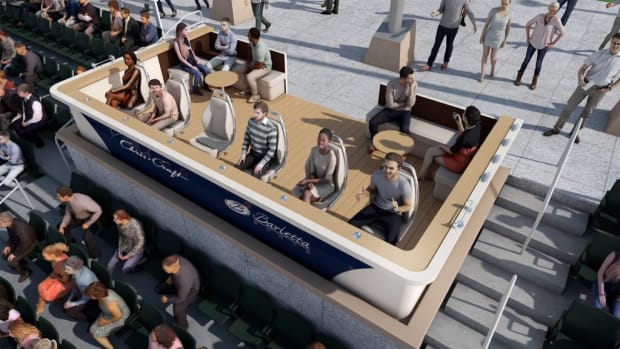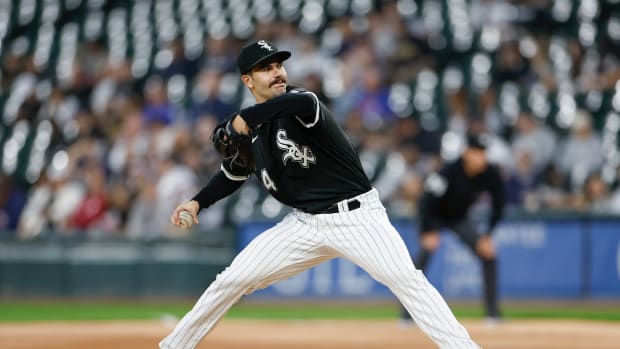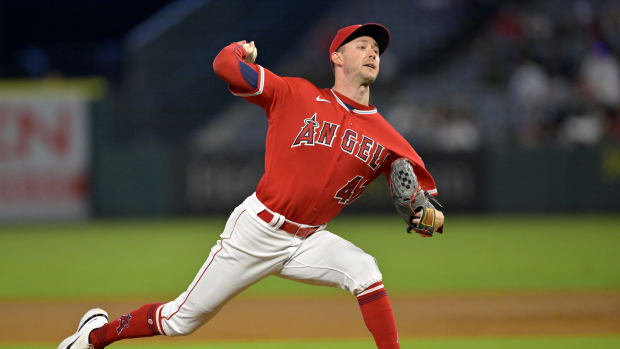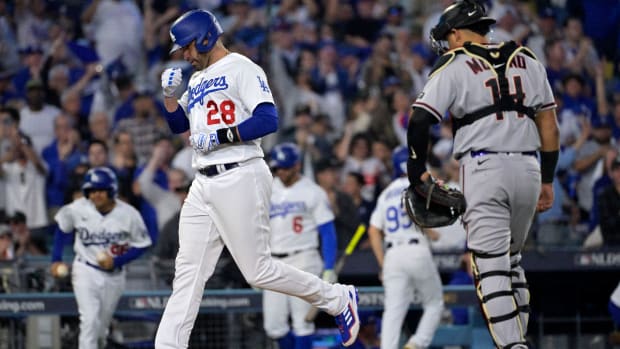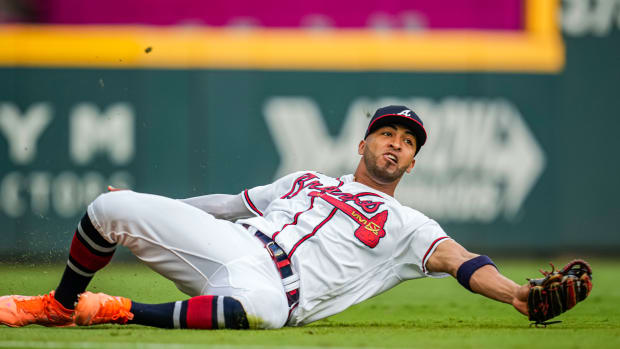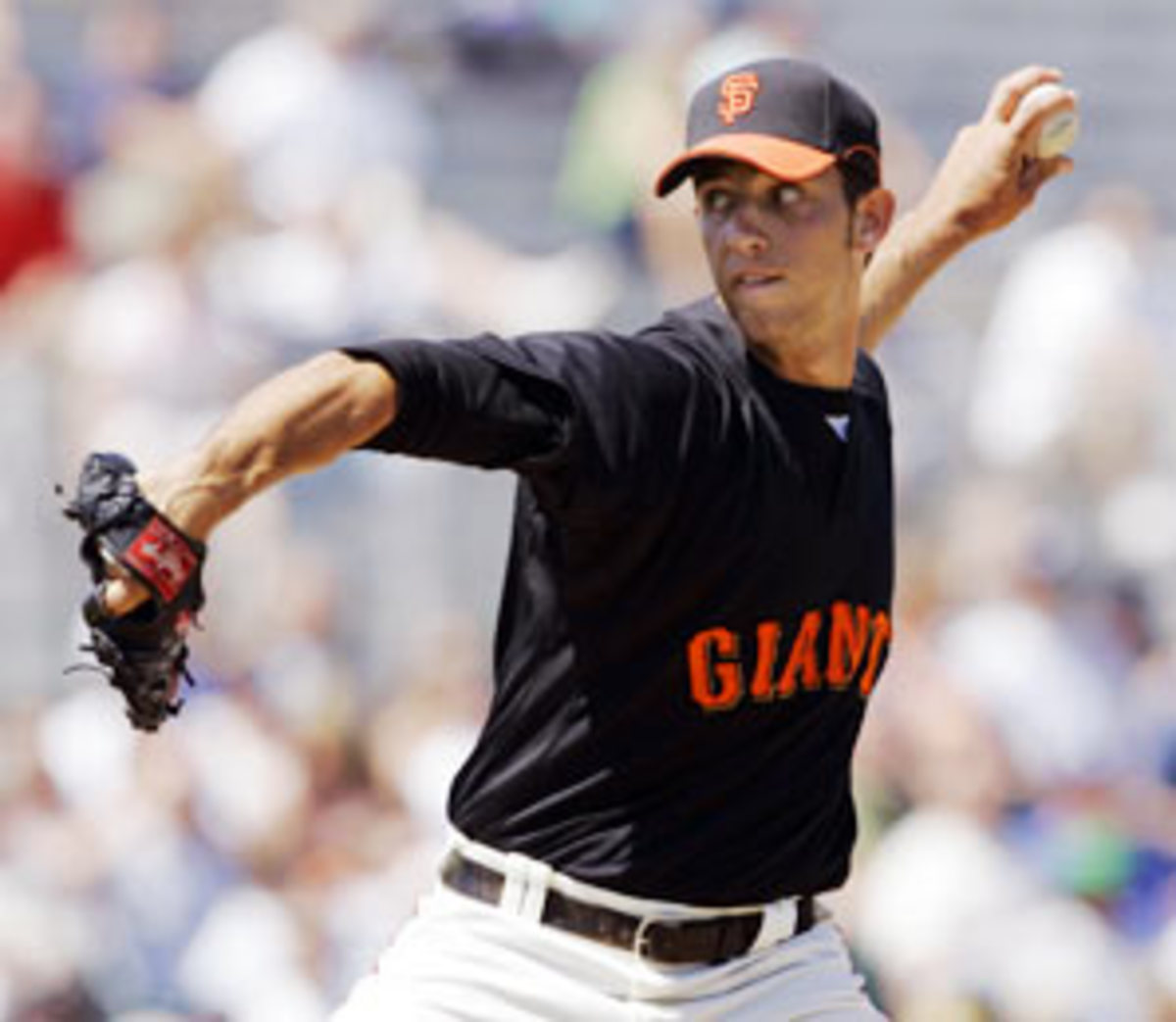
Ten high-impact minor league call-ups for the second half
Matt Wieters hit his third big-league home run Sunday, an opposite-field shot off Angels left-hander Joe Saunders that had that different sound off the bat. It prompted Hall of Famer Jim Palmer, doing color commentary on MASN, to joke, "Well, that's why they paid him $6 million."
Wieters was showing why he was the top prospect in the game coming into the 2009 season, and he and No. 2 David Price were first-half call-ups who will play major roles in the jumbled American League East playoff picture, Price as a member of Tampa Bay's rotation and Wieters in the spoiler role for the Orioles. In fact, the top four players on Baseball America's preseason top 100 prospects list are playing big roles in the big leagues -- center fielder Colby Rasmus has emerged as St. Louis' best left-handed power threat, and right-hander Tommy Hanson just had a 26-inning scoreless streak as Atlanta's new ace.
Many of the minors' top prospects have already been promoted to the majors, but there will still be some second-half call-ups who will have an impact on playoff races. Here's Baseball America's take on the 10 most important, in order of their projected impact on the postseason picture:
The hard-throwing Feliz entered the year as the Rangers' top prospect and best arm. He got off to a tough start in the Triple-A Oklahoma City rotation, with 25 walks in his first 38 1/3 innings. But the Dominican, acquired from the Braves in the blockbuster Mark Teixeira trade in 2007, has adjusted since a move to the bullpen. He has just three walks in his last 29 innings and still hits 98 mph regularly, with easy velocity that should be able to help Texas' bullpen down the stretch.
With J.J. Hardy struggling (.663 OPS) in Milwaukee and Rickie Weeks out at second base, Escobar is closer than ever to being able to help the Brewers in a pennant race. He's the best defensive shortstop in the minors, with smooth infield actions, soft hands and excellent footwork. He also is a plus runner who is starting to make his tools play better offensively. He's up to .302 at Triple-A Nashville, is an excellent bunter and improved base stealer (28-for-35).
The 2006 first-round pick has the stuff and the attitude to help the Phillies down the stretch, particularly in the bullpen. The son of the ex-Cy Young Award winner Doug Drabek, he has come back from Tommy John surgery and broken through in his first full, healthy season in the minors. He is 9-1, 2.58 overall this season, experiencing success at Double-A Reading. He has given up only one home run in 101 innings and has a dominant fastball/curveball combination. The biggest issue is Drabek's durability -- he had just 110 career innings coming into the season. He's not likely to be a big-league starter this year due to that workload, but he could be a useful relief option down the stretch.
The 10th overall pick in 2007, Bumgarner is the best pitching prospect in the minors, a precocious power pitcher with premium velocity. His fastball sits in the 90-94 mph range with good life and movement down in the strike zone. He also has fastball command, so that he can pitch off his heater more than most pitchers. With Randy Johnson and Jonathan Sanchez either hurting or ineffective, the Giants could use another left-hander for their playoff push. No team has a better in-house answer than Bumgarner.
Minnesota hasn't solved its middle-infield issues this season, shuffling through the likes of Alexi Casilla, Matt Tolbert and Nick Punto along with the modestly productive Brendan Harris. Tolleson -- whose father, Wayne, was a light-hitting, all-glove big leaguer for 10 seasons -- could provide an answer. He's a better fit defensively at second, but he has more offensive upside than any Twins infielder save Casilla. He has solid gap power from the right side, as well as patience and speed and has excelled since a promotion to Triple-A Rochester (.316/.392/.456).
Cincinnati has a surprising lack of offense given its ballpark, and could use a right-handed-hitting outfielder to replace Willy Taveras (.590 OPS). It would help if that player could play center field, and Heisey fits that bill. A former 17th-round pick out of Division III Messiah (Pa.), Heisey emerged as a legitimate prospect last year, then was the Southern League's batting leader (.347) before earning a promotion to Triple-A, where he was off to a 10-for-32 start. Scouts grade Heisey as average or above in all five tools, and he has the power, speed and defense to give the Reds a significant upgrade over Taveras for the short- and long-term.
Texas just sent down Chris Davis due to his .202 average and 114 strikeouts in 258 at-bats. As polished a hitter as Smoak -- the 11th overall pick in 2008 -- is, he can't match Davis' explosive power. But Wieters' former high school teammate does have plenty of power of his own, from both sides of the plate, and is a better hitter, with a more patient approach and better defensive skills at first. Smoak is coming off an oblique strain and has just joined Feliz at Oklahoma City. He'll need to prove he can handle Triple-A pitching, but if he does he could force his way into the Rangers' lineup.
San Francisco is the current wild-card leader in the National League, but the Giants desperately need more power. Bowker, who hit 10 home runs in the big leagues last year, is the organization's best in-house source of help on that front. He has 16 homers at Triple-A Fresno while hitting .349 through 275 at-bats, and more importantly he is showing improved plate discipline. He walked 19 times and struck out 74 times in 350 plate appearances last year in San Francisco; in Fresno this year he has posted a 52-50 walk-to-strikeout rate in 333 plate appearances.
Wood is no longer technically a "prospect" because he has too many big-league at-bats, but he's in his third season in Triple-A and continues to make adjustments, cutting down on his strikeouts and showing the ability to play solid defense in either spot on the left side of the infield. Wood loses out with manager Mike Scioscia, who prefers quicker infielders such as Erick Aybar, Chone Figgins and Maicer Izturis. But the Angels could use another right-handed bat, and Wood looks like a better bet to make an impact than his struggling former minor-league teammate, Howie Kendrick.
The Braves' outfield woes are well-documented, particularly those of right fielder Jeff Francoeur. Another in-house answer, Brandon Jones, is in his third year in Triple-A and is homerless this season. Enter Heyward, Atlanta's 2007 first-round pick. He was a non-roster invitee to big-league camp this spring, hanging around through mid-March, and just got promoted to Double-A. It would be a rush job to bring his premium bat speed and right-field tools to the majors to replace Francoeur, but the National League East is wide open, and a jolt from a big bat like Heyward's could separate Atlanta from the pack.































